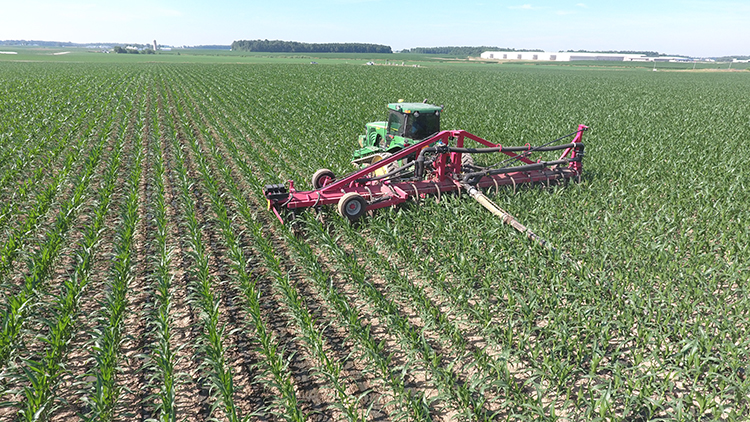
Manure application is often a race against the clock. With a limited window of time in the spring or fall, there aren’t always enough days suitable for application to empty manure storages.
Plus, as farms grow in size, there can be millions of gallons of manure that need to be applied annually. According to Glen Arnold, an associate professor and extension specialist at The Ohio State University, an efficient custom manure applicator may be able to apply one million gallons of manure daily – on a good day. “We have a lot of work to do,” he noted when it comes to fall or spring manure application.
For several years, Arnold has been exploring opportunities to extend the application period. One of them is in-season manure application. He discussed the benefits of this practice during a “Manure as an additional revenue stream for dairy farms” workshop held in Fair Oaks, Ind.
For corn, research has shown that manure can applied to growing corn up to the V-4 stage without any yield loss. The plants may bend over, Arnold said, but they will bounce back the next day. Beyond the V-4 stage, the plants will be too tall and damage will occur.
Arnold believes there are a few reasons farmers should consider in-season manure application. The first is to extend that application window. A climatologist at Ohio State estimates that, due to changing weather and climate conditions, there are five less days in the fall and two less days in the spring to do fieldwork.
“When we don’t have as many days for fieldwork, there are not as many days for manure application,” Arnold emphasized.
Another factor that might be weather related is the presence of more dissolved phosphorus being found in ditches and streams. One cause of this may be farms putting manure in fields at questionable times when runoff is a higher risk. In-season application provides more days – about 35 in early planted corn and 20 days in late planted corn before it reaches the V-4 stage, Arnold noted – to get into the fields, hopefully providing more days to apply manure under desirable conditions.
There are also economic reasons. “Commercial fertilizer prices have nearly tripled,” explained Arnold. “These prices have changed the attitude of a lot of people. They are wanting to use our manure.” A longer application period allows more options for getting manure to fields that can use it.
Along those same lines, Arnold said that states like Ohio are really placing an emphasis on the Four R’s – applying the right source of manure at the right place, the right time, and at the right rate. A wider application window allows more manure to be applied where and when it should be.
Currently, not many commercial manure applicators are set up to do in-season application, but Arnold said some are starting to acquire the appropriate equipment to do this. He is amazed at all that commercial applicators are already doing to apply more manure with more precision, and he believes new technologies and practices will continue to be necessary as we move toward the future of manure management.








